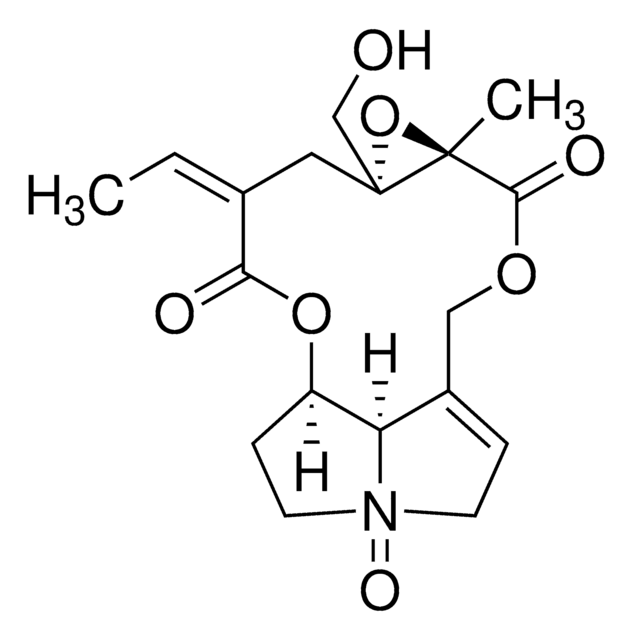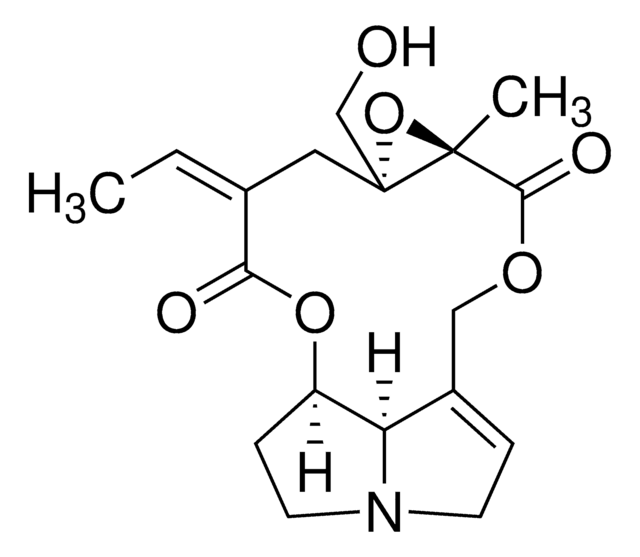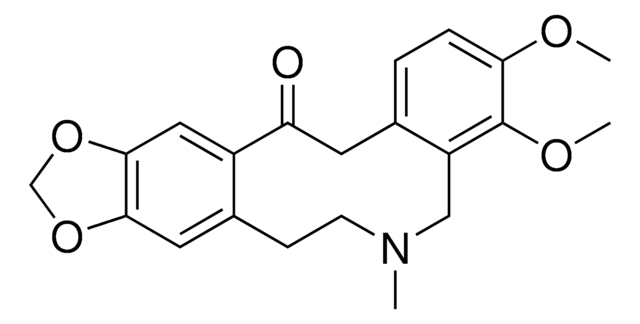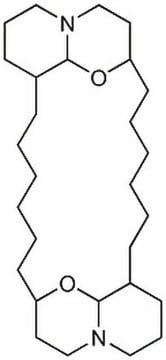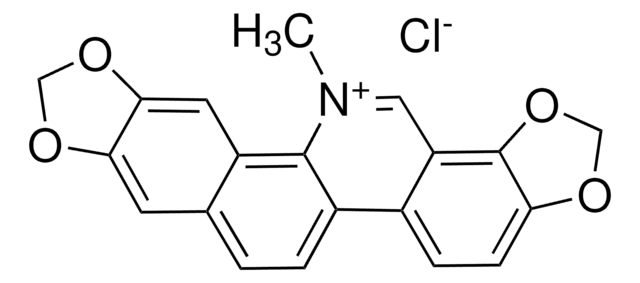220285
Chelerythrine Chloride
Naturally-occurring alkaloid.
Synonyme(s) :
Chelerythrine Chloride
About This Item
Produits recommandés
Niveau de qualité
Pureté
≥97% (HPLC)
Forme
solid
Puissance
660 nM IC50
Fabricant/nom de marque
Calbiochem®
Conditions de stockage
OK to freeze
Couleur
light yellow to yellow
Solubilité
water: 1 mg/mL
DMSO: 10 mg/mL
Conditions d'expédition
ambient
Température de stockage
−20°C
InChI
1S/C21H18NO4.ClH/c1-22-10-16-13(6-7-17(23-2)21(16)24-3)14-5-4-12-8-18-19(26-11-25-18)9-15(12)20(14)22;/h4-10H,11H2,1-3H3;1H/q+1;/p-1
Clé InChI
WEEFNMFMNMASJY-UHFFFAOYSA-M
Description générale
Actions biochimiques/physiologiques
PKC
Avertissement
Notes préparatoires
Reconstitution
Autres remarques
Jarvis, W.D., et al. 1994. Cancer Res.54, 1707.
Barg, J., et al. 1992. J. Neurochem.59, 1145.
Herbert, J.M., et al. 1990. Biochem. Biophys. Res. Commun.172, 993.
Ko, F., et al. 1990. Biochim. Biophys. Acta1052, 360.
Walterova, D., et al. J. Med. Chem.24, 1100.
Informations légales
Mention d'avertissement
Warning
Mentions de danger
Classification des risques
Acute Tox. 4 Dermal - Acute Tox. 4 Inhalation - Acute Tox. 4 Oral - Eye Irrit. 2 - Skin Irrit. 2 - STOT SE 3
Organes cibles
Respiratory system
Code de la classe de stockage
11 - Combustible Solids
Classe de danger pour l'eau (WGK)
WGK 3
Point d'éclair (°F)
Not applicable
Point d'éclair (°C)
Not applicable
Certificats d'analyse (COA)
Recherchez un Certificats d'analyse (COA) en saisissant le numéro de lot du produit. Les numéros de lot figurent sur l'étiquette du produit après les mots "Lot" ou "Batch".
Déjà en possession de ce produit ?
Retrouvez la documentation relative aux produits que vous avez récemment achetés dans la Bibliothèque de documents.
Notre équipe de scientifiques dispose d'une expérience dans tous les secteurs de la recherche, notamment en sciences de la vie, science des matériaux, synthèse chimique, chromatographie, analyse et dans de nombreux autres domaines..
Contacter notre Service technique
